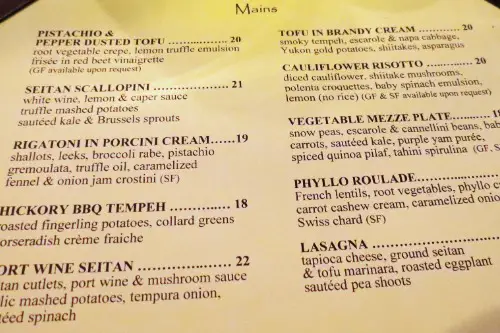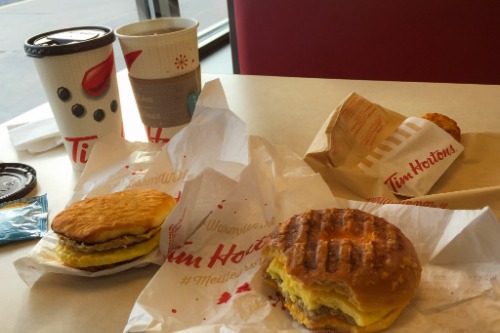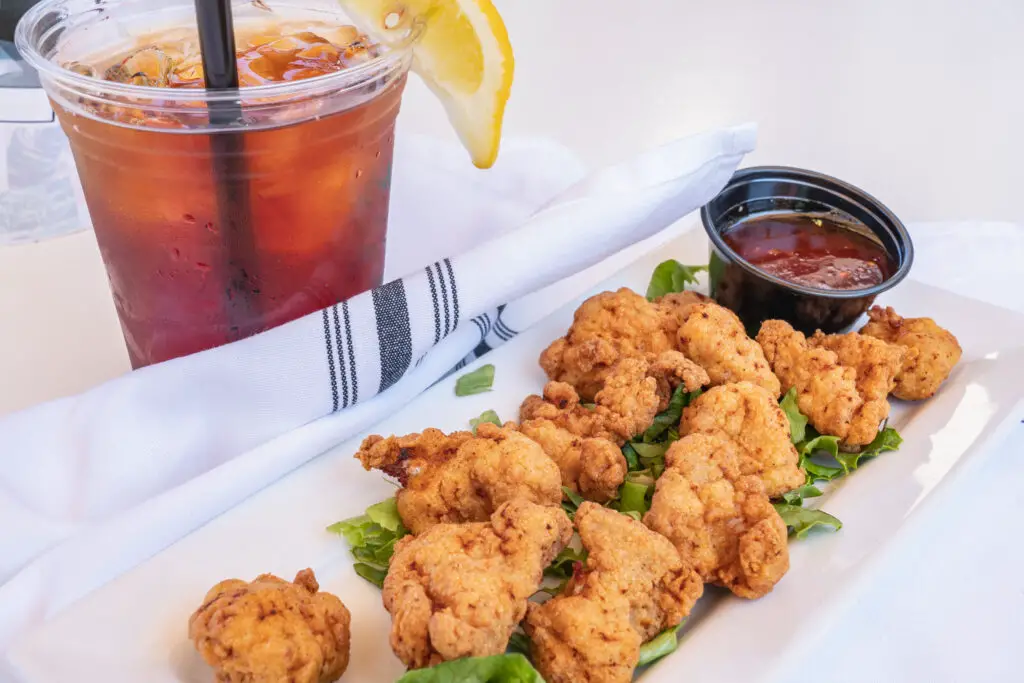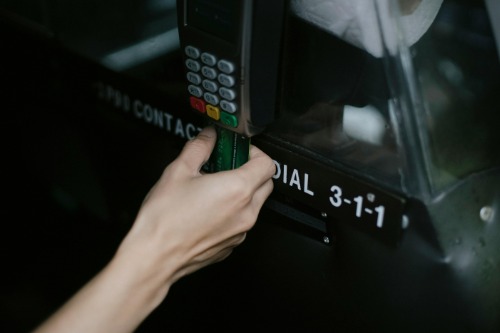1. Tipping (And How Much)

In the U.S., tipping isn’t just a courtesy—it’s an expected part of the dining experience. While many countries include service charges in the bill or don’t expect tips at all, Americans routinely add 15-20% (or more) to their total, Arwa Mahdawi explains in The Guardian. This can be shocking for visitors from places like Japan or France, where tipping can even be seen as insulting. For Americans, though, it’s a way to ensure servers—who often rely on tips for their income—are properly compensated.
Tipping culture also extends beyond sit-down restaurants to places like coffee shops, bars, and even takeout spots. The rise of digital payment screens asking for tips has made the practice even more widespread. Foreign visitors often feel confused about when and how much to tip, leading to awkward encounters. Meanwhile, Americans instinctively calculate gratuity before even finishing their meal.
2. Huge Portion Sizes

Many visitors are stunned by the sheer amount of food that arrives on their plate at an American restaurant, according to Joe Avella from Business Insider. In most of the world, portions are more modest, meant to satisfy rather than overwhelm. But in the U.S., diners often get servings that could easily feed two or three people. This leads to another uniquely American habit: asking for a to-go box to take leftovers home.
Part of this stems from the belief that more food equals better value for money. Fast-food combos, all-you-can-eat buffets, and supersized drinks reinforce the idea that bigger is better. Visitors from places like France or Japan, where meals are carefully portioned, may find the excess surprising. Yet for Americans, a giant plate of food is just part of the dining experience.
3. Constant Refills on Drinks

In many countries, when you order a drink, you get one glass—maybe two if you’re lucky. But in the U.S., servers automatically refill soda, iced tea, and even coffee without an extra charge, Sayed Kashua explains in The New Yorker. This unlimited drink culture amazes foreigners who are used to paying per beverage. It’s especially surprising in places where water isn’t even free, like parts of Europe.
The practice is so ingrained that Americans often don’t even think about it. If their drink is running low, a fresh one magically appears without them asking. This can be confusing for visitors who try to pace themselves, only to realize their glass keeps getting topped off. While Americans love the generosity, some travelers find it excessive or even wasteful.
4. Chatty Waitstaff

In many countries, servers are polite but professional, keeping interactions to a minimum. In the U.S., though, waiters often introduce themselves by name and check in multiple times during the meal. They might ask about your day, crack a joke, or give personal recommendations. To visitors from cultures where service is more reserved, this friendliness can feel oddly personal.
Americans expect a certain level of engagement from their servers, seeing it as part of good hospitality. A server who doesn’t smile or engage in small talk may be considered rude or inattentive. Foreigners, however, might feel overwhelmed by the constant attention. They may wonder if the waiter is being overly friendly just to earn a bigger tip (which, in some cases, is true).
5. Splitting the Check

In many countries, it’s common for one person to cover the bill, or for the group to round up and split it evenly, Kiki Aranita from Food & Wine explains. But in the U.S., it’s completely normal for each person to pay for exactly what they ordered. Servers are used to handling multiple cards or itemizing the check, and no one finds it awkward. Visitors from places like Italy or China, where treating others is a point of pride, may find this approach a bit cold.
The logic behind splitting the bill is fairness—why pay for someone else’s steak when you just had a salad? For Americans, the idea of evenly splitting an expensive bill when they ordered less can feel unfair. This habit is especially strong among younger diners and casual groups. Foreign guests sometimes feel pressured to follow along, even if it’s unfamiliar.
6. Eating Out All the Time

While dining out is a special occasion in many cultures, Americans treat it as an everyday activity. Whether it’s grabbing a quick lunch, picking up dinner, or going out for coffee, eating outside the home is extremely common. The convenience of fast food, takeout, and casual dining makes it easy. In countries where home-cooked meals are the norm, this can seem excessive.
Part of this comes from the fast-paced American lifestyle, where cooking can feel like a chore. It’s also a cultural preference—many Americans simply enjoy the variety and social aspect of eating out. Visitors from countries with a stronger home-cooking tradition may find the reliance on restaurants strange. However, in the U.S., eating out is just a way of life.
7. Calling the Waiter Over

In many countries, diners wait patiently for the server to approach them when they need something. But in the U.S., it’s completely normal to wave, make eye contact, or even call out to get a waiter’s attention. American servers are trained to be attentive, so they don’t mind being summoned. However, in places like Japan or France, this would be considered rude or impatient.
This difference comes from varying expectations about service. In some cultures, waiting staff are meant to be almost invisible, only appearing when absolutely necessary. Americans, on the other hand, expect efficiency and fast service, so waiting too long for a refill or the check feels frustrating. Foreign guests might hesitate to signal their server, unsure if it’s appropriate.
8. Modifying Menu Items

In many countries, the menu is the menu—chefs expect you to take a dish as it’s intended. But Americans are used to customizing everything, from adding extra toppings to substituting side dishes. It’s common to hear requests like “Can I get this without onions?” or “Can I swap fries for a salad?” In some parts of the world, this level of pickiness would be seen as disrespectful to the chef.
This stems from the American emphasis on customer satisfaction. Diners expect to have their preferences accommodated, no matter how complicated. Restaurant staff are trained to say “yes” to almost any request, which can surprise visitors from places where food is served exactly as described. While Americans see it as normal, outsiders might wonder why so many people need their meals altered.
9. Eating Before Everyone is Served

In many cultures, it’s considered rude to start eating before everyone at the table has their food. But in the U.S., it’s common for people to dig in as soon as their plate arrives. The idea is that hot food should be enjoyed immediately rather than waiting and letting it get cold. Visitors from countries like France or China, where dining is more communal, may find this practice shocking.
This habit is especially noticeable in large groups, where meals often come out at different times. American diners tend to say, “Go ahead and start!” rather than waiting for everyone. In contrast, some cultures see eating first as selfish or impolite. The difference highlights the American focus on individual preferences over strict dining etiquette.
10. Dining and Dashing

While not something all Americans do, “dining and dashing” is a uniquely American concept that shocks foreign visitors. This is when people eat at a restaurant and then leave without paying, essentially stealing their meal. While rare, it happens enough that restaurants train staff to be on the lookout. Many foreigners can’t believe it’s an issue, as walking out on a bill is nearly unheard of in some countries.
Part of the reason this shocks outsiders is that in many places, customers pay before eating or at a counter on the way out. In the U.S., where checks are brought at the end of the meal, there’s an opportunity for dishonest diners to take advantage. Some restaurants even require payment upfront for large groups or late-night service. Foreigners may be surprised that trust plays such a big role in the American dining experience.
11. Over-the-Top Friendliness

In many countries, dining is a relaxed experience where servers focus on efficiency rather than personality. But in the U.S., waitstaff often go above and beyond to be cheerful, sometimes to the point of sounding fake. A server might compliment your outfit, ask about your weekend, or crack jokes while taking your order. This level of engagement can be overwhelming for visitors from cultures where service is more reserved.
While Americans see friendly service as a sign of good hospitality, some foreigners find it exhausting. They may wonder if the enthusiasm is genuine or just a way to earn a bigger tip. In places like Germany or South Korea, where service is professional but distant, American-style waitstaff can feel overly familiar. What Americans see as warmth, others might interpret as unnecessary small talk.
12. Leaving Food on the Plate

Many cultures emphasize finishing everything on your plate as a sign of respect. But in the U.S., leaving food behind—especially in a restaurant—is completely normal. Because portions are so large, many diners simply can’t finish their meals. Visitors from places like India or China, where wasting food is frowned upon, may find this habit surprising.
Instead of forcing themselves to finish, Americans often ask for a takeout box. This practice isn’t as common in other countries, where leftovers might not be allowed or seen as unnecessary. Some foreigners are also shocked by how much food gets thrown away, especially in buffet-style restaurants. The American mindset leans more toward abundance than scarcity, which influences attitudes toward leftovers.
13. Paying with a Credit Card and Leaving the Check Unattended

In some countries, when you pay your bill, the server brings a card reader to the table or takes your cash directly. But in the U.S., it’s common to leave your credit card inside the check holder and wait for the server to return with a receipt. This surprises visitors from places where handing over your card and having it disappear from sight feels risky. In many parts of the world, keeping an eye on your payment method is the norm.
Americans trust that their card will be processed correctly, even if they don’t see it happen. The practice stems from an old system where checks were handled away from the table. Even though mobile card readers are becoming more popular, many restaurants still use the traditional method. Foreign visitors often feel uneasy watching their card disappear, fearing potential fraud.
14. Being in a Rush to Leave

In many countries, dining out is a slow, social experience where people linger over their meals for hours. But in the U.S., once the plates are cleared and the check is paid, diners usually leave quickly. Servers might even bring the bill without being asked, signaling that it’s time to wrap up. This can feel abrupt to visitors from places like Italy or Spain, where meals stretch on leisurely.
American restaurants operate with high table turnover in mind, meaning they rely on new customers cycling through. Unlike in other cultures where staying longer is encouraged, in the U.S., it can feel like overstaying is a faux pas. Even if the conversation is still flowing, many Americans instinctively start wrapping up as soon as they finish eating. Foreigners often feel pressured to leave before they’re ready, even if no one is explicitly rushing them.


